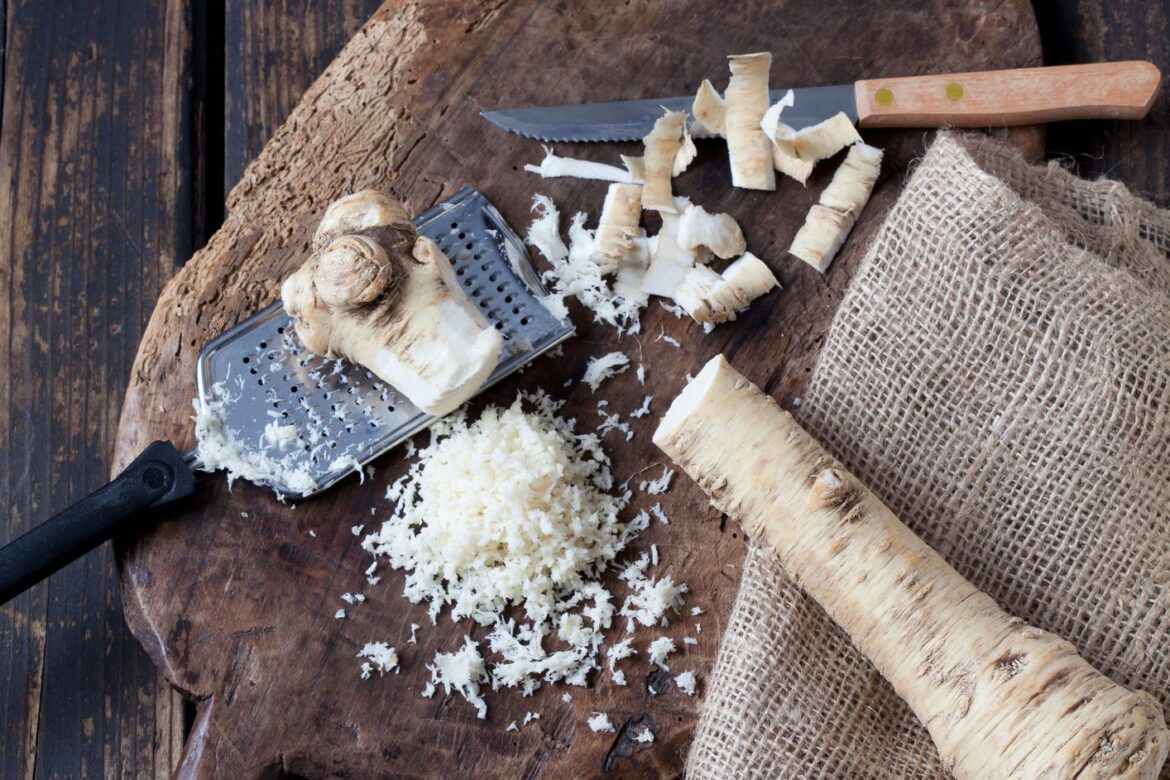2K
If you only pay attention to a few small things when storing horseradish, the healthy ingredients of the spicy vegetable will be largely preserved
Horseradish – preserving the nutrients with the right storage
The taste of horseradish is unmistakable and certainly not to everyone’s taste. The root vegetable owes its pungency to the mustard oils, which are not only aromatic but also healthy.
- But these are not the only healthy components of horseradish. Did you know that the root vegetable contains more vitamin C than a lemon? And not just a little more, horseradish has twice as much vitamin C.
- While 100 grams of lemon contain around 50 milligrams of vitamin C, horseradish contains over 110 milligrams.
- Horseradish also contains potassium, which is important for our blood pressure and electrolyte balance, and some B vitamins, which ensure strong nerves, among other things.
- In order to preserve the nutrients and the unmistakable aroma of horseradish, correct storage is essential. Essential oils in particular have a tendency to evaporate quickly, meaning that the taste of horseradish is largely lost
Pickle horseradish – this keeps the vegetables fresh and aromatic
If you have your own garden, you not only have organic horseradish to hand at all times, you also have the ideal storage option.
- Unlike most other vegetables, you don’t have to harvest horseradish by a certain date. You can leave the root vegetable in the vegetable patch without worrying and only pick as much horseradish as you need for cooking. Horseradish is frost-resistant; temperatures as low as minus five degrees are no problem for the vegetable
- If you get a large quantity of fresh horseradish, the garden or alternatively the patio is also a good place to store the vegetables.
- Bury the unwashed root vegetables in damp sand. This will preserve the nutrients and flavor of the horseradish for three to four months.
- If you don’t have a garden or terrace, you can still use the freezer to store horseradish for several months.
- Before you freeze the vegetables, wash them. Then dry the roots well and leave them overnight so that the vegetables dry well. Place the unpeeled horseradish in portions in freezer bags or freezer tins
- The basic rule is: only cut off as much of the vegetable as you need. Either place the horseradish that has not yet been peeled in a food storage container or wrap it in cling film. Then place it in the vegetable drawer.
- Sliced horseradish can be stored for around two weeks without loss. If the root vegetables are neither cut nor peeled, they will keep for around four weeks in the crisper. Before placing it in the crisper, wash the horseradish and dry it well.
- If you have grated too much horseradish, put it in a jar immediately and seal it tightly. Then put the jar in the fridge. The grated horseradish should be used within one to two weeks
- Note: Horseradish is not a vegetable that should be dried. When dried, the root loses its mustard oil and therefore its aroma.

